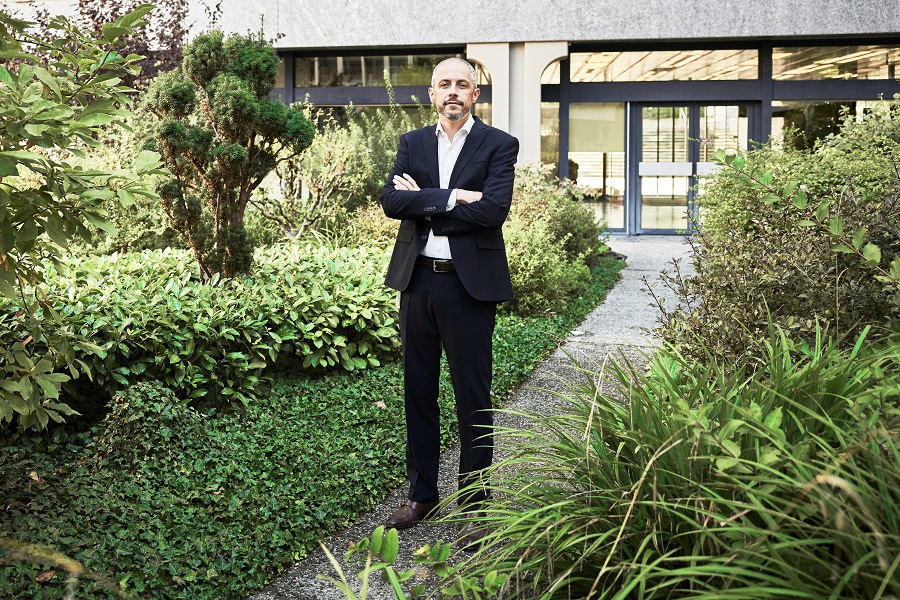Several compelling reasons were supporting SITA’s decision to acquire digital solutions start-up Safety Line. SITA FOR AIRCRAFT CEO Sébastien Fabre shares more detail on why this acquisition was so important.
How is this acquisition supporting the industry’s COVID-19 recovery and sustainable aviation?
SITA is 100% owned by the air transport industry, and our role is to keep industry operations running safely and efficiently. We have been working closely with our customers to support their recovery following the downturn in passenger volumes and the financial pressures brought on by COVID-19 over the last 18 months.
There is also an increasing environmental focus on aviation to decarbonize quicker, intensified with the release of the recent Intergovernmental Panel on Climate Change (IPCC) report. The report warns that temperatures may surpass the 1.5oC target of the 2015 Paris climate agreement unless action is taken to reduce emissions. Plus, rising global temperatures will bring about more extreme weather events. In response, we have been implementing new and existing solutions to support sustainable aviation that delivers greater operational efficiencies, reduces emissions, and builds climate resilience.
After an existing successful partnership between SITA and Safety Line to make flights more sustainable by integrating Safety Line’s OptiFlight product with our eWAS Pilot application, the acquisition was a logical next step. There was a natural synergy as the primary focus for Safety Line and SITA’s aircraft business is aircraft safety and efficiency.
OptiFlight has been awarded a Solar Impulse Efficient Solution label for being a profitable and clean technology and recognized by the United Nations as an example of Sustainable Development Goals (SDG) Good Practices. It is the only predictive in-flight fuel efficiency solution leveraging machine learning performance models enabling an aircraft to optimize all flight phases, including climb-out, cruise, and descent - the largest sources of carbon emissions for airlines. Transavia, using modules of OptiFlight, has seen estimated savings on fuel and carbon emissions of 82kg per climb, with 223 CO2 tons reduction a year per aircraft tail.
eWAS Pilot, used by 67,000 pilots today, provides accurate 4D weather forecasts and real-time updates to warn about weather hazards and relay flight optimization information. The app helps pilots make informed, proactive decisions when planning weather diversions regarding the safety of all those onboard the aircraft. The ability to also develop more economical and flexible flight route plans ensures strong on-time performance while reducing fuel burn and carbon emissions.
The eWAS tool helps airlines enhance their resilience to climate-related weather incidences. Recently, a commercial flight encountered storm conditions that caused significant damage to the aircraft, and I’m sure some anxiety for the passengers and crew onboard. Had the eWAS Pilot solution been used in this scenario, it would have helped the pilot avoid the storm and the associated costs incurred with the incident.
Combining these two innovative products into one solution – a weather app with a fuel-efficiency app – delivers significant customer value. For example, we recently signed a deal with Bombardier, where eWAS Pilot with OptiFlight is a feature offered on its Challenger 3500 business jet. The combined products, coined the “eco app” by the Canadian Aerospace Group, will help pilots maximize fuel efficiency, reduce carbon emissions, support climate resilience and improve situational awareness for a safer flight. It’s the first time a business jet has been fitted with the combined apps – opening a new market for us.
Beyond OptiFlight, what other factors made Safety Line a compelling investment?
Safety Line is much more than just OptiFlight. The company’s healthy product pipeline – aviation solutions covering safety and risk management, inflight efficiency, and airport operations – complements SITA products and customer base. The integration of Safety Line will allow us to enhance our offerings to existing and new customers. It has helped strengthen SITA’s leadership in inflight operation applications.
Safety Line’s commercial strength, agility, and technical capabilities made it a sound business for investment. Creating innovative and relevant solutions to address market needs while maintaining operational stability was truly compelling. They are one of the only companies applying machine learning to aviation in a practical manner.
As I mentioned earlier, safety is a crucial part of SITA’s business ethos. The acquisition includes SafetyCube, a solution that enables aviation stakeholders to manage their safety and compliance proactively. Key customers include large airports such as Paris-CDG and Paris-Orly or original equipment manufacturers (OEMs) such as Airbus Helicopters, as well as airlines and air traffic management (ATM) providers, all of which make up SITA’s primary customer base. SITA will, therefore, be able to boost its offering to include safety-enhancing services to existing customers.
Safety Line’s AirsideWatch will allow us to expand our airport solutions to airside operations and address airports’ collaborative decision-making needs, complementing our SITA Airport Management solution. Airside Watch uses surface movement radar data to understand, analyze, and optimize aircraft ground traffic better between gates and runways to reduce unnecessary emissions.
What is the next step for SITA and Safety Line?
We are already advocating some of the Safety Line products to benefit SITA’s customer base, particularly OptiClimb, because of the significant fuel and emission savings aircraft operators can realize. The product integrates seamlessly with all of SITA’s Digital Day of Operations cockpit solutions and/or any electronic flight bag (EFB) apps airlines use. For these reasons, we anticipate it will be of significant interest to our airline customers.




 Share
Share




